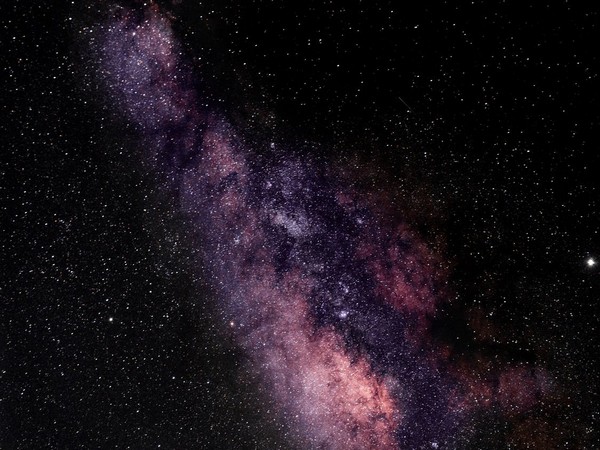The Astrophysical Journal Letters released an early study of Webb’s First Deep Field picture, which shows some of the very first galaxies in the cosmos….reports Asian Lite News
A team of Canadian astronomers, including experts from the Dunlap Institute for Astronomy & Astrophysics in the University of Toronto’s Faculty of Arts & Science, have used the James Webb Telescope to identify the most distant globular clusters ever discovered – dense groups of millions of stars that may be relics containing the first and oldest stars in the universe.
The Astrophysical Journal Letters released an early study of Webb’s First Deep Field picture, which shows some of the very first galaxies in the cosmos.
“JWST was built to find the first stars and the first galaxies and to help us understand the origins of complexity in the universe, such as the chemical elements and the building blocks of life,” says Lamiya Mowla, a post-doctoral researcher at the Dunlap Institute for Astronomy & Astrophysics and co-lead author of the study, which was carried out by the Canadian NIRISS Unbiased Cluster Survey (CANUCS) team.
“This discovery in Webb’s First Deep Field is already providing a detailed look at the earliest phase of star formation, confirming the incredible power of JWST.”
The nine billion light-year-distance “Sparkler galaxy” was focused on by the astronomers in the finely detailed Webb’s First Deep Field photograph. The compact objects that encircle this galaxy and look as tiny yellow-red specks have been given the moniker “sparkles” by scientists.
The research team suggested that these sparkles may represent either young clusters of stars that are actively developing, which would have formed three billion years after the Big Bang, at the height of star creation, or older globular clusters. Globular clusters are old groups of stars from the beginning of a galaxy, and they provide information about the early stages of its development and expansion.
The researchers found that five of these compact objects are among the oldest known globular clusters after doing an initial investigation on 12 of these compact objects.
“Looking at the first images from JWST and discovering old globular clusters around distant galaxies was an incredible moment – one that wasn’t possible with previous Hubble Space Telescope imaging,” says Kartheik G. Iyer, a post-doctoral researcher at the Dunlap Institute for Astronomy & Astrophysics and co-lead author of the study.
“Since we could observe the sparkles across a range of wavelengths, we could model them and better understand their physical properties – like how old they are and how many stars they contain. We hope the knowledge that globular clusters can be observed at from such great distances with JWST will spur further science and searches for similar objects.”
It is known that the Milky Way galaxy contains roughly 150 globular clusters, but it is unclear exactly how and when these massive collections of stars formed. Although globular clusters can be quite ancient, astronomers have a very difficult time determining their ages. It has never been done before, and JWST alone makes it feasible, to age-date the initial stars in far-off galaxies using globular clusters that are extremely remote.
“These newly identified clusters were formed close to the first time it was even possible to form stars,” says Mowla. “Because the Sparkler galaxy is much farther away than our own Milky Way, it is easier to determine the ages of its globular clusters. We are observing the Sparkler as it was nine billion years ago, when the universe was only four-and-a-half billion years old, looking at something that happened a long time ago. Think of it as guessing a person’s age based on their appearance – it’s easy to tell the difference between a five- and 10-year-old, but hard to tell the difference between a 50- and 55-year-old.”

